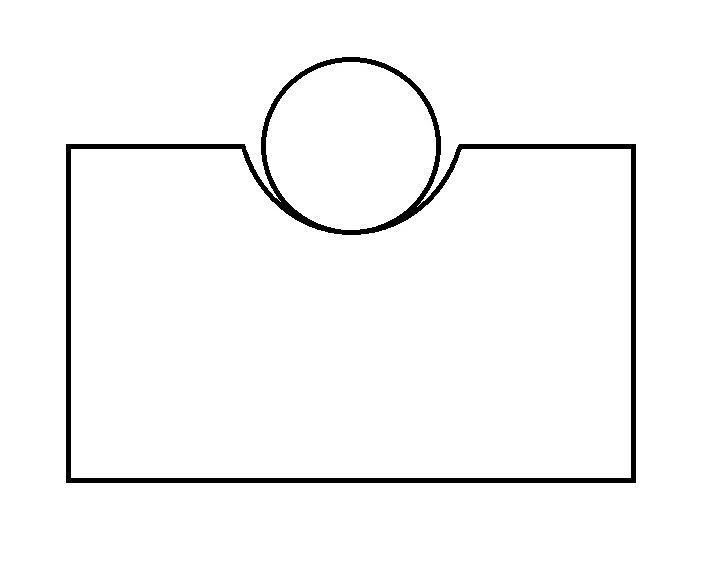hello,
i am just an amateur guitar player with an interest in guitars. i was looking at the a-b-c-d picture of nut slots on this page: http://www.frets.com/FRETSPages/Musician/GenSetup/Nuts/nuts3.html and wondering about another shape:
from reading the text it would seem that this shape would be fine. it won't bind and would keep the string centered. one advantage might be that it would allow for trying different gauges of strings without requiring any work on the nut.
so i started this thread looking for comments.
Views: 909
Replies to This Discussion
-
You may end up with some buzz. Also, if the tuner peg is at an angle to the nut, it won't stay centered.
-
Hello mc.
Kudos for your creative thinking. Thanks for submitting your idea (:
The type of nut slot you suggest would allow too much lateral movement of the string, therefore creating probable intonation/tuning issues. Glen's observation is also dead-on. And...it will be detrimental to the tone of the open strings as it wouldn't create a snug (but not restrictive) break point.
This arrangement would be especially problematic on electric guitar as string bending (w/the lateral slack) would cause the string to re-register itself "off center".
Actually, what you've illustrated with your drawing is a textbook example of how worn slots look which require a new nut to be cut.
Please don't let my 'opinion/observation' discourage you. Keep your thinking cap on and feel free to share your ideas with the rest of us. Dreams & ideas are the things that advance the craft.
Welcome to the board & best of luck (-:
-
thank you for the replies, glen and paul. what you have written make sense. i'm not discouraged at all, it was just a thought, and now i have a better understanding. i have lots of imaginative ideas about the guitar, so don't encourage me too much.
-
This idea is practical and makes sense to a degree, but has it's limitations. The steeper the breakover angle toward the tuners, the more suitable a slightly wide (and sensibly shaped) slot may be, as it does allow for varying string gauges and eliminates pinching of the sides. As breakover angles decrease however, or as sideways angle of the string to tuner increases, the more precise your slots have to be to a dedicated gauge.
I think the drawing may be a bit exaggerated to make the point clear, but on most guitars (and to a slightly lesser degree than drawn) I think it's just fine. Just be aware that shallower pegheads and splayed tuner arrangements may not provide enough direct downward force to reliably keep the string centered and secure. An Eric Johnson Strat for example, if not fit to perfect width and angle the string will bounce around in slot the slightest bit too wide, perhaps buzz, or at least no longer be seen by the wave as a firm boundary point.
Best to assess each instrument for what it is. In many cases this slightly wide curved slot can be appropriate for versatility with essentially no drawbacks in my opinion. In other cases slots have to be much more precisely matched or problems will be noticeable.
-
What about directing each slot to its assigned tuner?This also takes care of some of the described problems plus IMO it makes for smoother tuning.
-
i was thinking about this as well, and it seems to me it would put the stress of the angle right at the point where the string leaves the nut, which would push it to that side and perhaps slightly up the curve away from the lowest point.
-
david, thank you for your reply and the excellent point about the break angle.
-
Welcome to the board , mc.
I look forward to reading many more of your contributions here, and trust that some of them at least will be as witty as those you have posted on another forum!
-
murray, it took me a moment to recognize you without the carnation in your lapel. thank you for the kind and generous greeting.
-
I looks better than these. I have seen lots of nut slots like this and worse. i bet some of you guys have too.
- Attachments:
-
MC - I have a page about cutting slots that you might find helpful. About 2/3 of the way down you'll find some images of the bell of a horn, which are how I do slots that accommodate back- and side angles to the tuners while keeping strings firmly positioned.
-
Paul, your method/explanation of nut slotting is precisely how I've always envisioned and executed this task but never thought of the shape in terms of a bell. It's logical and intuitive (to me, anyway) to curve the bottom of the slot in such a way that eases the transition of the strings over the nut to the tuners.
© 2025 Created by Frank Ford.
Powered by
![]()
